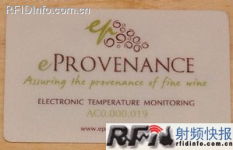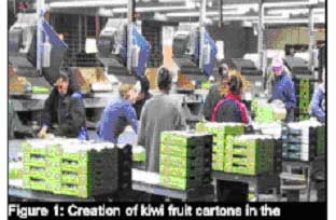
eProvenance uses RFID tags to track bottled red wine
[ad_1]
At present, the eProvenance company established by Eric Vogt applies this technology to the entire process of red wine production. To this end, eProvenance uses semi-active and passive RFID tags and special inks to track, identify and supervise bottled red wine.
The place of origin generally describes the storage, fidelity and environmental conditions of the wine from bottling to consumption. Vogt says that the value of red wines marked with origin will increase by 15%, sometimes more. However, most wine bottles do not have a record of origin.
Shippers usually place temperature trackers in the red wine boxes to monitor temperature changes during shipping. This increases the cost, but not a lot, Vogt said: “The shipping method only accounts for one-third or half of the entire trip.” However, he said: “If the packing box falls off the ship, it will be troublesome.” Because Temperature changes are only tracked in the shipping method, so participants in the red wine supply chain-from red wine manufacturers to shipping machines, to distributors and consumers, are unable to obtain complete or accurate origin records.

The Vogt team attached 13.56MHz passive tags with integrated temperature sensors to 1,200 red wine wooden boxes
Vogt and the team conducted a pilot six months ago, and the collected data strongly proved the above point of view. eProvenance is headquartered in Boston, USA, with offices in Paris and Bordeaux, France. In the pilot, the Vogt team attached 13.56MHz passive tags with integrated temperature sensors to 1,200 red wine wooden boxes. This batch of wine was originally produced in Bordeaux, France, and was shipped to the United Kingdom, the United States and Japan. Take a batch of wine shipped to Tokyo as an example. From the bottling of the wine to the shipping to the transshipment within a few weeks, the temperature is always within insurance coverage. However, the temperature became a bit high after arriving in Tokyo, so that the merchant had to reconsider how to store the batch of wine based on the temperature data on the label (RFID radio frequency bulletin: recorded three times a day).
This temperature tracking label is the size of a credit card and is provided by KSW Microtec. According to Liz Churchill, deputy director of the eProvenance Program Department, the tag contains an 8-kilobit memory that can store 720 readings. Calculated by recording three times a day, the battery inside can be used for one year.
Vogt said that the purpose of the current pilot work is to allow every unit that receives red wine to remove the label on the box and send it back to eProvenance. Next, eProvenance downloads the temperature records and enters the data into the origin database. The ID number on the label will correspond to the ID number of the passive label (provided by EmbedTech Industries and KSW Microtec) on each bottle in the box.
These passive tags can be used to identify and authenticate wine bottles, and are also connected to the temperature tracking tags on the box and shipping, distributor and broker information. Consumers or other businesses in the supply chain can find the origin information on the wine bottle by entering the eProvenance website and typing in the ID number printed on the outside of the label. The embedded code of the label is not the same as the number printed on the label, but the two are connected in the back-end database of eProvenance.

ISO 15693 passive label is affixed to the bottom of each wine bottle
Finally, invisible ink is printed on the foil cover of the cork of the wine bottle. In this way, a small hand-held reader can read the ink printing to ensure that the bottle will not be replaced with bad wine.
Vogt said that he has started this pilot project with nine different wineries in Bordeaux. Because the boxes of 1,200 labeled red wines did not arrive at their destinations at the same time, Vogt expects that all temperature data will not be collected until later this summer. He said that so far, about 60% of businesses have encountered trouble in the process of returning the temperature label to the company. Once the company has passed the pilot phase to gain a customer base—from brewers to distributors to retailers—these customers will tend to get data from the label itself and download data from the eProvenance database.
Vogt said that eProvenance’s concept of using RFID tags has three layers: traceability, identification, and access to regulatory records.
However, the wine industry is still hesitant to use this system, because tracking the temperature also increases the responsibility of the merchants in the supply chain, and they must always pay attention to the temperature changes that red wine faces. For this reason, Vogt has already begun to think about how to add insurance to the business. “If we have enough data to understand temperature changes in global shipping channels, and know what temperature is harmful to red wine, then we can provide insurance.”
It is rumored that the company will meet with experts in the brewing industry and the entire supply chain to discuss the matter in the next few weeks. Vogt finally said that all relevant parties will be interested in this system. Because through this system, customers can taste better-tasting red wines and buy more.
[ad_2]




